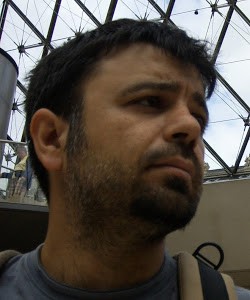Dr Victor Hernandez

Lecturer in Biomedical Sciences
Research Interests
Bardet-Biedl Syndrome, Primary cilia, ciliogenesis, retinal degeneration, obesity
Over the last ten years I have focused my career in studying of the molecular mechanisms behind human genetic disorders such as ciliopathies and craniofacial anomalies. The final aim of my research is to find a therapeutically solution for these untreatable disorders and cure or alleviate their symptoms. My interest have been focused in Bardet-Biedl Syndrome (BBS), a multi-syndromic disorder with characteristic truncal severe obesity, brain anomalies and retinal degeneration. At a molecular level, I have introduced the concept that the actin cytoskeleton is linked to cilia and play an important cellular role in ciliopathies such BBS.
My research have contributed to the development of animals models to study ciliopathies including zebrafish and BBS mouse models. My work with these mouse models have been an important tool to comprehend the biological progression of the retinal degeneration and obesity. I have help to broad our understanding of the origins of the retinal and obesity phenotypes in BBS, proving how they show a great variability within the penetrance of the phenotypes which is important to understand in the scientific community want to test possible therapies on them.
However, on top of all these efforts I consider that my most important contribution is the development of gene therapy solutions to treat obesity and retinal degeneration in BBS. In collaboration with many groups I have proven that the use of adeno-associated virus (AAV), as vectors to deliver corrected copies of BBS genes, are able to prevent retinal degeneration, obesity and CNS malformations in our BBS mouse models. This have led to a patent application, gene therapy for ciliopathies, which have one single aim; attract funding to start clinical trials in BBS patients. At the beginning of this journey we knew little over the function of the BBS genes, and we are now in a situation where a therapy appears as a real possibility. This is pushing me forward to improve our knowledge brain, obesity and retinal defects in ciliopathies and BBS, to test our therapies and all of this should be achieved using the best collaborative efforts and state of the art technology

 United Kingdom
United Kingdom